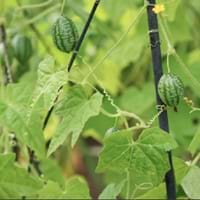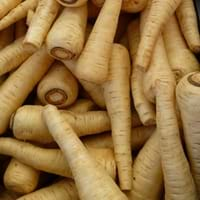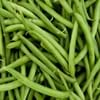Life Span
Annual
Biennial and Perennial
Origin
Central America, Mexico
Europe, Western Asia
Types
Slicing, Pickling and burpless
Not Available
Number of Varieties
Not Available
Habitat
Floodplains, Wet forest
waste ground, wastelands
USDA Hardiness Zone
7-8
4-9
Sunset Zone
A3, H1, H2, 1a, 1b, 2a, 2b, 3a, 3b, 4, 5, 6, 7, 8, 9, 10, 11, 12, 13, 14, 15, 16, 17, 18, 19, 20, 21, 22, 23, 24
A1, A2, A3, H1, H2, 1a, 1b, 2a, 2b, 3a, 3b, 4, 5, 6, 7, 8, 9, 10, 11, 12, 13, 14, 15, 16, 17, 18, 19, 20, 21, 22, 23, 24
Habit
Vining/Climbing
Rosette/Stemless
Flower Color
Yellow, Gold
Yellow
Flower Color Modifier
Bicolor
Bicolor
Fruit Color
Green
Brown, Black
Leaf Color in Spring
Light Green
Green
Leaf Color in Summer
Green, Dark Green
Green
Leaf Color in Fall
Green, Dark Green, Yellow green
Green
Leaf Color in Winter
Not Available
Not Available
Leaf Shape
Heart-shaped
Pinnate
Plant Season
Summer, Fall
Summer
Sunlight
Full Sun, Partial Sun
Full Sun
Growth Rate
Very Fast
Medium
The pH of Soil
Neutral
Neutral
Soil Drainage
Well drained
Well drained
Bloom Time
Early Summer, Summer, Late Summer, Early Fall, Indeterminate
Summer
Tolerances
Drought
Drought
Where to Plant?
Container, Ground
Ground, Pot
How to Plant?
Seedlings, Stem Planting
Seedlings
Plant Maintenance
Medium
Medium
Watering Requirements
Keep ground moist, Requires a lot of watering, Requires regular watering, Requires watering in the growing season
Average Water Needs, Do Not over Water, Keep the ground moist but not water-logged
In Summer
Lots of watering
Lots of watering
In Spring
Moderate
Moderate
In Winter
Average Water
Average Water
Soil Drainage Capacity
Well drained
Well drained
Sun Exposure
Full Sun, Partial Sun
Full Sun
Pruning
Prune after flowering, Remove shoots
Remove damaged leaves, Remove dead branches, Remove dead leaves
Fertilizers
Compost, organic fertlizers
All-Purpose Liquid Fertilizer
Pests and Diseases
Bacteria wilt, Fungal Diseases, fungus, Fusarium wilt, Leaf spot, Striped cucumber beetles
Aphids, Armyworm, Cutworms, Downy mildew, Pitch canker, Red blotch
Plant Tolerance
Cold climate
Drought
Flower Petal Number
Single
Not Available
Fragrant Bark/Stem
No
Yes
Foliage Texture
Coarse
Fine
Foliage Sheen
Matte
Matte
Attracts
Ants, Birds, Flying insects, Insects, Rats, Squirrels
Butterflies
Allergy
Throat itching, Vomiting
Stomach burn
Aesthetic Uses
Showy Purposes
Not Available
Beauty Benefits
Not Available
Blood purifying, Good for skin
Environmental Uses
Food for animals, Food for birds
Air purification
Medicinal Uses
Antioxidants, Combats Stress, Fiber, Improve heart health, Indigestion, Inflammation, Rich in Iron
Aphrodisiac
Part of Plant Used
Fruits, Seeds
Root
Other Uses
Used As Food, Used as Ornamental plant, Used for its medicinal properties
Food for animals, Used as a nutritious food item
Used As Indoor Plant
Yes
Yes
Used As Outdoor Plant
Yes
Yes
Garden Design
Edible, Herb / Vegetable, Vine
Edible, Herb, Vegetable
Botanical Name
MELOTHRIA scabra
PASTINACA sativa
Common Name
Mexican Sour Gherkins, cucamelon
Parsnip
In Hindi
Mousemelon
चुकंदर
In German
Maus Melone
Pastinake
In French
Mousemelon
Panais
In Spanish
Mousemelon
Chirivía
In Greek
πεπόνι ποντίκι
Είδος δαυκίου
In Portuguese
melão rato
cherivia
In Polish
mysz melona
Pasternak
In Latin
mouse melon
parsnip
Phylum
Tracheophyta
Magnoliophyta
Class
Magnoliopsida
Magnoliopsida
Order
Cucurbitales
Apiales
Family
Cucurbitaceae
Apiaceae
Clade
Angiosperms, Eudicots, Rosids
Angiosperms, Asterids, Eudicots
Tribe
Melothrieae
Not Available
Subfamily
Cucurbitoideae
Not Available
Number of Species
Not Available
Not Available
Importance of Mouse Melon and Parsnip
Want to have the most appropriate plant for your garden? You might want to know the importance of Mouse Melon and Parsnip. Basically, these two plants vary in many aspects. Compare Mouse Melon and Parsnip as they differ in many characteristics such as their life, care, benefits, facts, etc. Every gardener must at least have the slightest clue about the plants he wants to plant in his garden. Compare their benefits, which differ in many ways like facts and uses. The medicinal use of Mouse Melon is Antioxidants, Combats Stress, Fiber, Improve heart health, Indigestion, Inflammation and Rich in Iron whereas of Parsnip is Aphrodisiac. Mouse Melon has beauty benefits as follows: Not Available while Parsnip has beauty benefits as follows: Not Available.
Compare Facts of Mouse Melon vs Parsnip
How to choose the best garden plant for your garden depending upon its facts? Here garden plant comparison will help you to solve this query. Compare the facts of Mouse Melon vs Parsnip and know which one to choose. As garden plants have benefits and other uses, allergy is also a major drawback of plants for some people. Allergic reactions of Mouse Melon are Throat itching and Vomiting whereas of Parsnip have Stomach burn respectively. Having a fruit bearing plant in your garden can be a plus point of your garden. Mouse Melon has showy fruits and Parsnip has no showy fruits. Also Mouse Melon is not flowering and Parsnip is not flowering . You can compare Mouse Melon and Parsnip facts and facts of other plants too.





